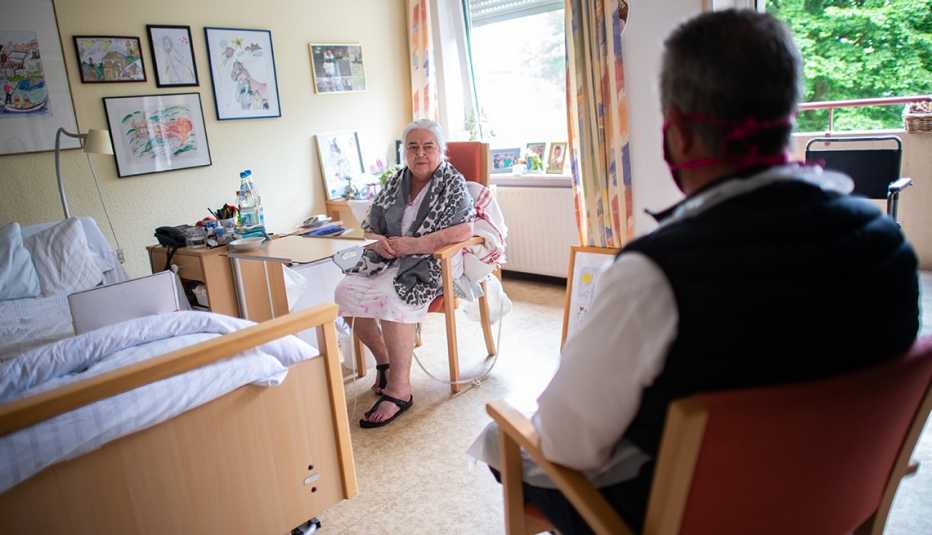AARP Hearing Center
Nursing homes in the U.S. serving minority populations have been the hardest hit by infections and deaths from COVID-19, an analysis involving thousands of long-term care facilities by a University of Chicago professor found.
The analysis showed that nursing homes with the fewest white residents were “more than twice as likely to have COVID-19 cases or deaths” than facilities with the highest percent of white residents, said R. Tamara Konetzka, a professor of health economics who has researched long-term care facilities for 25 years.
The work showed a “strong and consistent relationship” between race and the probability of COVID-19 cases and deaths, she said.


Konetzka discussed her findings Thursday, and made recommendations for improving nursing homes during the pandemic, before the Senate Special Committee on Aging. Her testimony was submitted in advance and she also addressed senators at the hearing.
Konetzka noted that the finding that nursing homes with traditionally underserved populations are bearing the worst outcomes during the pandemic “is consistent with racial and socioeconomic disparities in long-term care historically and in pandemic-related deaths currently."
Other key points:
• Because people who need nursing home care usually want to stay close to their home, nursing homes are often a reflection of the neighborhoods in which they are located. Nursing homes serving predominantly nonwhite residents are more likely to be located in predominantly nonwhite neighborhoods and to draw staff from those neighborhoods. As these are the neighborhoods and the people being most affected by the pandemic, nursing homes in these areas are also most at risk.
• Nurses and nurse aides in these settings share many of the same vulnerabilities experienced in the communities where COVID-19 is most prevalent. These staff members are predominantly nonwhite, low-income and dependent on public transportation. Many live in families and communities with other essential workers who are unable to work at home and practice social isolation.
• These staff members are more likely to be sick, to have caregiving responsibilities for children or other relatives and to be facing financial hardship. Some fear showing up to work and contracting the virus. Other may come to work despite feeling symptomatic because of a lack of paid sick leave, fear of job loss or a sense of dedication when staff members are desperately needed.



































































